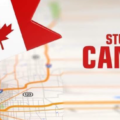As the year slowly draws to an end, a plethora of new information has been unveiled by Immigration Refugees and Citizenship Canada. Let’s look at the work immigration highlights of 2022 at a glance:
Bill C-19 or The Budget Implementation Act
After waiting in the wings for years, Bill C-19, which amends the Immigration and Refugees Protection Act, was finally passed on June 23rd, 2022 after it received Royal approval. What the Bill essentially does in regards to getting a Canadian work permit is that it targets certain people who have been classified into groups based on a specific factor like work experience, job title, language-proficiency, etc.
Express Entry draws will then be held based on invitations sent out to these targeted groups as opposed to the current system of CRS which uses broader classifications like CEC, PNP, FSW, etc. In addition to CRS, targeted draws can be implemented by provinces while looking for particular streams, for example, French-speaking Investment Bankers. Moreover, the CRS score cut-off which is 494 at the moment will dip and is expected to remain on the lower side for the next couple of years.
Intake History and Target
The 2022 Annual Immigration Report to Parliament was released by the Minister of Immigration, Refugees, and Citizenship, Sean Fraser in the first half on November 22 for the next three years, i.e., 23-25. The number of people granted permanent residency through Express Entry stood at 139, 459 in 2021 while the number of temporary workers that were let in through IMP and TFW stood at 313294 and 103552 respectively.
For the following year 2022-2023, the projected intake for economic immigration programs such as EE, PNP, Atlantic Immigration Program, Agri-Food Pilot, etc stands at an estimated average of 266,210. On the other hand, the tradition of not setting a ceiling on work permit numbers has been maintained as they fulfil specific ongoing market-demands instead of consistent requirements. However, skilled workers who are aspiring immigrants are being encouraged to apply for work permits.
Job Vacancies and Employment Opportunities
The rampant shortage of labour in most Canadian industries is the reason their immigration intake is so high in the first place. On the bright side though, this very drawback makes Canada such a promising country in terms of employment options and attracts a diverse group of individuals who want to work and settle there. Canada has a system of National Occupation Classification (NOC) which uses TEER (training, education, experience, responsibilities) categories like 0, 1, 2, 3, 4, and 5 to differentiate between and divide different types of workers into similar groups.
For an instance, managerial jobs requiring a university degree is TEER tier 0 while jobs which short-term skill-demonstration and no formal education are TEER tier 5. Jobs like web developer, nurse, driver, account manager, project manager, teacher, human resource executive, etc show consistent demand and popularity over the years. However, certain provinces like Ontario, Alberta, Newfoundland, Prince Edward Island, etc are easier to get jobs in and very popular among Canadian immigrants.
Now that you’re armed with all the recent, important information about Canadian work permits, don’t waste time in fulfilling your dreams. Reach out to the best in the field Canadian Immigration Consultant in Brampton, Ontario, Sirsma Immigration, with years of experience in helping people get their work permit visa in Brampton, Ontario.



